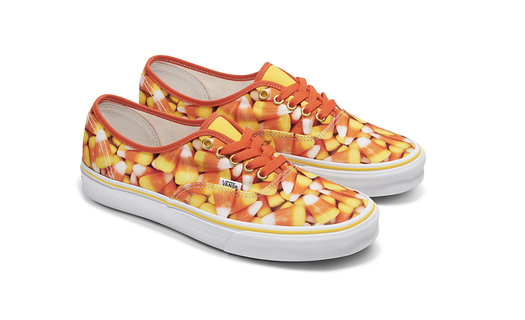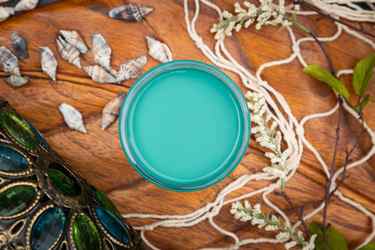Love It or Hate It, Feelings Run High Over Candy Corn Come Halloween

Cruel joke for trick-or-treaters or coveted seasonal delight? The great Halloween debate over candy corn is on.
In the pantheon of high-emotion candy, the classic shiny tricolor kernels in autumn’s white, orange and yellow are way up there. Fans and foes alike point to the same attributes: its plastic or candle-like texture (depending on who you ask) and the mega-sugar hit it packs.
“I am vehemently pro candy corn. It’s sugar! What is not to love? It’s amazing. It’s like this waxy texture. You get to eat it once a year. It’s tricolor. That’s always fun,” comedian Shannon Fiedler gushed on TikTok. “Also, I know it’s disgusting. Candy corn is objectively kind of gross, but that’s what makes it good.”
Love it or loathe it, market leader Brach’s churns out roughly 30 million pounds of candy corn for the fall season each year, or enough to circle planet Earth about five times, the company says. Last year, that amounted to $75 million of $88.5 million in candy corn sales, according to the consumer research firm Circana.
When compared to top chocolate sellers and other popular confections, candy corn is niche. But few other candies have seeped into the culture quite like these pointy little sugar bombs.
Sponsored
While other sweets have their haters (we’re looking at you Peeps, Circus Peanuts and Brach’s Peppermint Christmas Nougats), candy corn has launched a world of memes on social media. It inspires home decor and fashion. It has its knitters and crocheters, ombre hairdos, makeup enthusiasts and nail designs.
And it makes its way into nut bowls, trail mixes, atop cupcakes and into Rice Krispie treats. Vans put out a pair of shoes emblazoned with candy corn, Nike used its color design for a pair of Dunks, and Kellogg’s borrowed the flavor profile for a version of its Corn Pops cereal.

Singer-actor Michelle Williams is a super fan. She recorded a song last year for Brach’s extolling her love.
As consumers rave or rage, Brach’s has turned to fresh mixes and flavors over the years. A Turkey Dinner mix appeared in 2020 and lasted two years. It had a variety of kernels that tasted like green beans, roasted bird, cranberry sauce, stuffing, apple pie and coffee.
It won’t be back.
“I would say that it was newsworthy but perhaps not consumption-worthy,” said Katie Duffy, vice president and general manager of seasonal candy and the Brach’s brand for parent Ferrara Candy Co.
The universe of other flavors has included s’mores, blueberry, cotton candy, lemon-lime, chocolate and, yes, pumpkin spice. Nerds, another Ferrara brand, has a hard-shell version.
It’s unclear when candy corn was invented. Legend has it that Wunderle Candy Co. in Philadelphia first produced it in 1888 in collaboration with a longtime employee, George Renninger. It was called, simply, Butter Cream, with one type named Chicken Corn. That made sense in an agrarian-society kind of way.
Several years later, the Goelitz Confectionery Co., now Jelly Belly, began to produce candy corn, calling it Chicken Feed. Boxes were adorned with a rooster logo and the tagline: “Something worth crowing for.“ Brach’s began candy corn production in 1920.
Today, kids delight in stacking candy corn in a circle, points in, to create corncob towers. As for nutrition, 19 candy corns amount to about 140 calories and 28 grams of sugar. To be fair, many other Halloween candy staples are in the same ballpark.

Ingredient-wise, it couldn’t be more straightforward. Candy corn is basically sugar, corn syrup, confectioner’s glaze, salt, gelatin, honey and dyes, among some other things.
“It’s not any sweeter than a lot of other candy, and I’ve tasted every candy there is,” said Richard Hartel, who teaches candy science at the University of Wisconsin-Madison.
Hartel’s students spend time in the lab making candy. The candy corn lab is among his most popular, he said, because it’s fun to make. His unscientific poll of the nine seniors who last made candy corn turned up no strong feelings either way on actually eating it.
“It’s the flavor, I think, that puts some people off. It sort of tastes like butter and honey. And some people don’t like the texture, but it’s really not that much different than the center of a chocolate-covered butter cream,” he said.
Candy corn fans have their nibbling rituals.
Margie Sung is a purist. She’s been partial since childhood to the original tricolor kernels. She eats them by color, starting with the white tip, accompanied by a warm cup of tea or coffee.
“To this day, I swear the colors taste different,” she laughed.
Fact check: No, according to Duffy.
Don’t get people started on Brach’s little orange pumpkin candies with the green tops. That’s a whole other conversation.
“The candy pumpkins? Disgusting,” said the 59-year-old Sung, who lives in New York. “Too dense, too sweet, not the right consistency.”
She likes her candy corn “borderline stale for a better consistency.” Sung added: “Unfortunately, I can’t eat too many because I’m a Type 2 diabetic.”
And then there are the hoarders. They freeze candy corn for year-round consumption. Others will only eat it mixed with dry roasted peanuts or other salty combinations.
“My ratio is 2 to 3 peanuts to 1 piece of candy corn. That’s the only way I eat it,” said Lisa Marsh, who lives in New York and is in her 50s. She stores candy corn in glass jars for year-round pleasure.
To the haters, 71-year-old fan Diana Peacock of Grand Junction, Colorado, scolded: “They’re nuts. How can they not like it?”
Au contraire, Jennifer Walker fights back. The 50-year-old Walker, who lives in Ontario, Canada, called candy corn “big ole lumps of dyed sugar. There’s no flavor.”
Her Ontario compatriot in Sault Ste. Marie, Abby Obenchain, also isn’t a fan. She equates candy corn with childhood memories of having to visit her pediatrician, who kept a bowl on hand.
“A bowl of candy corn looks to me like a bowl of old teeth, like somebody pulled a bunch of witch’s teeth out,” said Obenchain, 63.
Candy corn isn’t just a candy, said 29-year-old Savannah Woolston in Washington, D.C.
Sponsored
“I’m a big fan of mentally getting into each season, and I feel like candy corn is in the realm of pumpkin spice lattes and fall sweaters,” she said. “And I will die on the hill that it tastes good.”

Care about what’s happening in Bay Area arts? Stay informed with one email every other week—right to your inbox.
How Trick-or-Treating Became a Halloween Tradition
The practice can be traced to the ancient Celts, early Roman Catholics and 17th-century British politics.
Updated: October 18, 2023 | Original: October 3, 2019

Trick-or-treating—setting off on Halloween night in costume and ringing doorbells to demand treats—has been a tradition in the United States and other countries for more than a century. Its origins remain murky but traces can be identified in ancient Celtic festivals, early Roman Catholic holidays, medieval practices—and even British politics.
Haunted History of Halloween
Ancient Origins of Trick-or-Treating
Halloween has its roots in the ancient, pre-Christian Celtic festival of Samhain, which was celebrated on the night of October 31. The Celts, who lived 2,000 years ago in the area that is now Ireland, the United Kingdom and northern France, believed that the dead returned to earth on Samhain. On the sacred night, people gathered to light bonfires, offer sacrifices and pay homage to the dead.
Modern-day trick-or-treating also has elements akin to annual celebrations of Guy Fawkes Night (also known as Bonfire Night). On this night, which commemorates the foiling of the Gunpowder Plot in 1605, British children wore masks and carry effigies while begging for pennies. On November 5, 1606, Fawkes was executed for his role in the Catholic-led conspiracy to blow up England’s parliament building and remove King James I, a Protestant, from power.
On the original Guy Fawkes Day, celebrated immediately after the famous plotter’s execution, communal bonfires, or “bone fires,” were lit to burn effigies and the symbolic “bones” of the Catholic pope. By the early 19th century, children bearing effigies of Fawkes were roaming the streets on the evening of November 5, asking for “a penny for the Guy.”
Trick-or-Treating in the United States and Facts
Some American colonists celebrated Guy Fawkes Day, and in the mid-19th century, large numbers of new immigrants, especially those fleeing the Irish Potato Famine in the 1840s, helped popularize Halloween.
In the early 20th century, Irish and Scottish communities revived the Old World traditions of souling and guising in the United States. By the 1920s, however, pranks had become the Halloween activity of choice for rowdy young people.
The Great Depression exacerbated the problem, with Halloween mischief often devolving into vandalism, physical assaults and sporadic acts of violence. One theory suggests that excessive pranks on Halloween led to the widespread adoption of an organized, community-based trick-or-treating tradition in the 1930s. This trend was abruptly curtailed, however, with the outbreak of World War II, when sugar rationing meant there were few treats to hand out. At the height of the postwar baby boom, trick-or-treating reclaimed its place among other Halloween customs. It quickly became standard practice for millions of children in America’s cities and newly built suburbs. No longer constrained by sugar rationing, candy companies capitalized on the lucrative ritual, launching national advertising campaigns specifically aimed at Halloween.
Today, Americans spend an estimated $3.1 billion on candy on Halloween, according to the National Retail Federation, and the day, itself, has become the nation’s second-largest commercial holiday.
HISTORY.com works with a wide range of writers and editors to create accurate and informative content. All articles are regularly reviewed and updated by the HISTORY.com team. Articles with the “HISTORY.com Editors” byline have been written or edited by the HISTORY.com editors, including Amanda Onion, Missy Sullivan, Matt Mullen and Christian Zapata.



